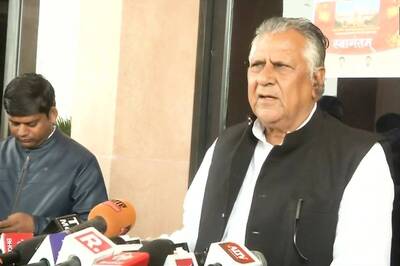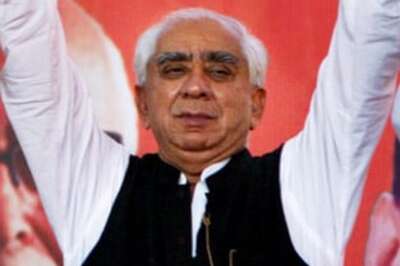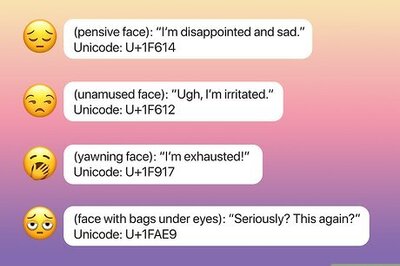
views
It was a few months after the 1982 Samastipur Rath Yatra by the Vishva Hindu Parishad (VHP). “Ali Miyan, one of the most noted Islamic scholars and the head of the famous Islamic seminary Nadwa College in Lucknow, called me to discuss the (Ayodhya) matter in 1983,” recalls advocate Zafaryab Jilani, one of the most recognisable voices in the legal battle from the Muslim side in the Ram Janmabhoomi-Babri Masjid land dispute case.
Then a young man, Jilani, who says he got associated with the cause in court by chance, reminisces how information on the matter was scarce at the time. Merits and weaknesses were not known. “It was then that Ali Miyan gave me Rs 2,000 and asked me to get the files from Ayodhya and prepare a note on the historical position of the mosque,” he says. It was also discussed to start a Tahrik, or a movement within the community in support of the Babri Masjid.
This is the story not of an individual but of an organisation. As the nearly 70-year-long legal battle over the Ram Janmabhoomi-Babri Masjid land dispute in independent India moves towards completion, one name that emerges as the biggest crusader for the Muslim cause is the Babri Masjid Action Committee. The wrangle over the land, where Babri Masjid stood, dates back to 1857 when Maulvi Muhammad Asghar, the muezzin of the mosque, filed a petition before the magistrate complaining that the courtyard of the structure had been forcibly taken over by the mahant of Hanumangarhi. In 1859, the British government got a wall built, separating the places of worship for Hindus and Muslims. Since then till the intervening night of December 22nd and 23rd in 1949, the status quo remained at the site, before idols of Ram and Sita were placed inside the mosque.
Six days after the so-called “emergence” of the idols, on December 29, Babri Masjid was declared a disputed property. Orders were passed barring Muslims from entering the mosque. The main gate was locked and Hindus were given permission for a darshan from a side gate.
From the time of being declared a disputed property in 1949 till 1975, the matter remained pending with the sessions court in Faizabad. In 1975, a case was filed in the Allahabad high court, against orders of receivership. Two years later, the case was transferred to the Lucknow bench of the high court. This after the Awadh Bar Association filed a petition claiming jurisdiction of matters of Faizabad/Ayodhya was with the bench at Lucknow.
From 1977, over the next few years, the case remained in limbo. No progress was made as judge after judge recused themselves. Not many from the Muslim side or the Hindu side took much interest in the legal battle. But as things started changing politically with Hindu groups gradually building a movement around the Ram Janmabhoomi campaign, the Muslim side too pulled up its socks.
The initiative from Ali Miyan, who was also the president of the All India Muslim Personal Law Board (AIMPLB), laid the first building blocks of the movement that over the next few years would lead to the formation of the Babri Masjid Action Committee (BMAC)
On January 2, 1986 came a big moment in the dispute as the Faizabad district judge passed orders for opening the locks of the main gate of the Babri Masjid. On the same day, an urgent meeting of the AIMPLB was held, where it was decided to chalk out a campaign strategy in support of mosque.
A meeting of Muslim leaders was held at the residence of noted lawyer Abdul Mannan in Lucknow on January 4. Those present included Azam Khan, the current MP from Rampur and a senior leader of the Samajwadi party. Also present was the-then Congress MLA Sayeeduzzama. Two days later, a larger meeting was called at a house located in one of the narrow byways of Aminabad in Lucknow with around 200 people in attendance. It was in this meeting that the Babri Masjid Action Committee was formed.
Azam Khan and Zafaryab Jilani were elected conveners while Maulana Muzaffar Hussain was made the president. In 1987, civil suits in the case were withdrawn from Faizabad and transferred to the Lucknow bench of the Allahabad high court. As the legal battle continued, it was the Babri Masjid Action Committee (BMAC) under the aegis of the AIMPLB which built up a community movement against the temple agitation being spearheaded by right-wing Hindu organisations and the Bharatiya Janata Party (BJP).
The situation changed dramatically when the mosque was demolished by right-wing activists on December 6, 1992. Jilani says, “With the Babri mosque being no more and a subsequent Supreme court order of 1994, our focus shifted towards the legal battle. There was pressure on the personal law board to take over the case. The action committee was given the task of the legal battle.”
Since then, for almost a quarter of a century, it’s the Babri Masjid Action Committee that has pursued the legal battle on behalf of different Muslim parties including the Sunni Central Waqf Board, both in the high court and since 2010 in the Supreme Court. The case reached the SC after the Lucknow bench of the Allahabad high court on September 30, 2010 ordered equal division of the land among the three main parties in the title suit: Sunni Central Waqf Board, Nirmohi Akhara and Ram Lalla Virajman.
So what happens to the Babri Masjid Action Committee as the case heads towards conclusion and most likely a judgement by mid-November? Convener Jilani has no ready answers. But he accepts that “things will not be the same as before”. With near certainty of the legal battle reaching a closure, the committee may well become a part of the historical journey of one of the most contentious political, social and legal disputes of contemporary India.
As the Ayodhya land dispute case draws to a close, a News18 series traces the journey of one of the most protracted legal battles in the history of independent India.



















Comments
0 comment